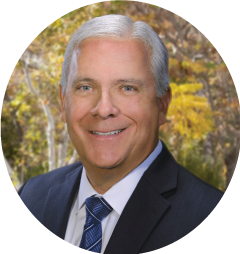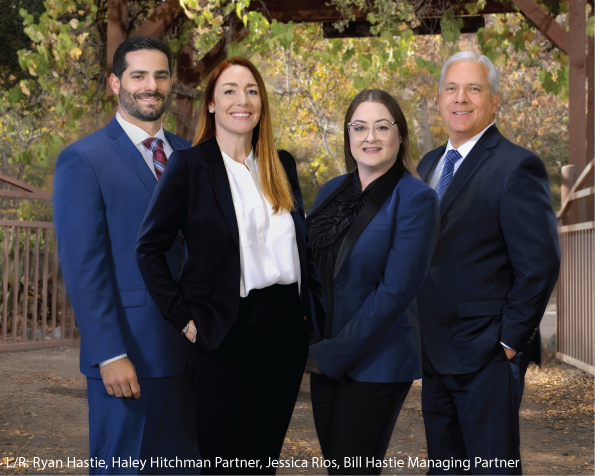A high-touch, low pressure approach
Through early May 2022, the S&P Index was down nearly 13% from its December 31, 2021, recent high. Others — the Dow, NASDAQ, bond markets — also continue to struggle with volatility and investor uncertainty.
“It comes down to the Fed and the Administration committing to working together to reduce the money supply, restore the labor markets (11-plus million jobs currently available) and raising interest rates only as much as needed to curb inflation,” Bill Hastie, managing partner and registered principal with Hastie Financial Group, told Advisors Magazine in a recent interview.  “It will be a difficult and delicate task,” added Hastie, who has an MBA and is also a CIMA® (Certified Investment Management Analyst), AIFA® (Accredited Investment Fiduciary Analyst), RMA® (Retirement Management Advisor), C(k)P® (Certified 401(k) Professional), and CPFA (Certified Plan Fiduciary Advisor).
“It will be a difficult and delicate task,” added Hastie, who has an MBA and is also a CIMA® (Certified Investment Management Analyst), AIFA® (Accredited Investment Fiduciary Analyst), RMA® (Retirement Management Advisor), C(k)P® (Certified 401(k) Professional), and CPFA (Certified Plan Fiduciary Advisor).
Based in Salinas, California, Hastie Financial Group pledges to clients that it will only offer services in which they have a strong expertise, and the firm limits its scope of practice to those services.
“I call it high touch, low pressure,” Hastie said. “We make it understood that we are not here to sell anything, and clients’ needs are our first and foremost consideration.”
Hastie’s financial services journey began in college when he pursued a degree in economics with a concentration in finance. He took several investment and securities analysis courses as part of his concentration and was drawn to the industry. Soon after graduation from California Polytechnic State University, Hastie was offered a job with Bank of America in San Francisco as a financial analyst.
“I waited one year — the advice from my college’s MBA director — before applying to Golden Gate University’s MBA – Financial Planning program,” he recalled. “I completed a three-year program in two years and began in the industry with my father-in-law who had a significant insurance business.”
At his father-in-law’s firm, Hastie managed the investments and financial planning. Sometime thereafter, he broke away to start his own firm. Hastie also returned to Golden Gate University to teach in their MBA – Financial Planning program. That was some 36 years ago—but Hastie continues to value teaching his clients to this day.
“As a former instructor in the MBA – Financial Planning program at Golden Gate, education takes a strong role in most everything we do,” he said. “We take the time to fully inform clients what we are doing and why we are doing it, although we have discretionary trading authority.”
The core values underpinning his practice: “Full disclosure and transparency, serving our clients as a fiduciary in everything we do, never compromising our integrity,” Hastie summarized.
Asked what books or people influenced him, Hastie quickly ticks off: The Bible, the economist and author Austan Goolsbee, who chaired President Obama’s Council of Economic Advisors, and Richard Thaler, the economist and behavioral economics professor at the University of Chicago Booth School of Business.
Meanwhile, today’s proliferation of desktop and mobile trading platforms have also worked in Hastie Financial Group’s favor and its emphasis on education.
“Online and mobile platforms often do us a favor,” Hastie noted. “They educate some clients enough to realize they do not want or cannot be their own advisor; a more highly educated client is a better client,” he said. Armed with his array of credentials and certifications, Hastie (along with his partner Haley Hitchman, AIF®, CPFA and Ryan Hastie, CPFA) provides services to a diverse client base that requires tailored planning solutions.
Armed with his array of credentials and certifications, Hastie (along with his partner Haley Hitchman, AIF®, CPFA and Ryan Hastie, CPFA) provides services to a diverse client base that requires tailored planning solutions.
In order to better serve the growing practice, Hastie noted that Haley Hitchman joined Hastie Financial Group in 2008 and began serving clients as a financial advisor in 2010. In 2016 she became an equity partner and shares duties that include portfolio design and management for private clients and 401(k) plans, as well as developing financial and retirement income plans. Ryan Hastie joined the firm in 2021 and currently performs fund and portfolio analysis and monitoring for all clients.
“Different clients have different needs in retirement planning,” Hastie said. “For a physician, for example, we focus on optimizing their retirement plan to maximize contributions in order to realistically plan for significant retirement income,” he explained. “This often involves adding a cash balance plan to an existing 401(k) plan once the physician is reaching the 415 limit in the 401(k) plan. For a W2 wage earner, it’s often a matter of matching sources and uses of future income.”
Life expectancy is the primary factor in determining future income needs, and nowadays Americans are living longer than in years past. In fact, California is one of the top two states in the country for life expectancy, clocking in at 81 years old, according to the website californiabeat.org.
“Planning as far in advance of a client’s expected retirement date and matching sources and uses of future income play a key role,” Hastie said. “The first ‘draft’ of a retirement plan can often serve as a reality test which helps keep a client’s expectations in line with what is possible,” he added. “If we find that a client’s expectations are unrealistic, we work to adjust income expectations and savings commitments to help reach a more realistic level.”
Both clients and financial advisory firms alike had to adjust to the reality of the 2020-2021 pandemic. Lessons were learned amid a fast-changing, competitive landscape.
“Being able to adapt to clients’ changing needs has been key for surviving 2020 and 2021,” Hastie said, “2022 seems to be converging pre- and post-pandemic environments – let’s call it the ‘new norm.’”
But that ‘new norm’ may be a bumpy ride—with economists warning about the risks of inflation and the possibility of a recession.
“Fixed income management is by far the most difficult in this environment,” Hastie said. “I am concerned that the Fed has waited far too long to act, and that the money supply (M2) has grown to astronomical levels – all spelling inflation,” he added.
“The key question right now is: can the Fed slow inflation without driving the economy into recession?” Hastie said. “It will also take the Administration to commit to reducing or temporarily eliminating any future stimulus programs that played a significant role in expanding the money supply.”
From Hastie’s vantage point, clients may have to experience lower investment returns than in the recent past and may even require revisiting their long-term planning.
“More volatility in both the equity and fixed income markets is likely,” he summarized. “Recession seems to have a high probability in 2022 or 2023, and inflation is higher than many people have ever seen.”
For more information, visit: hastiefinancialgroup.com




